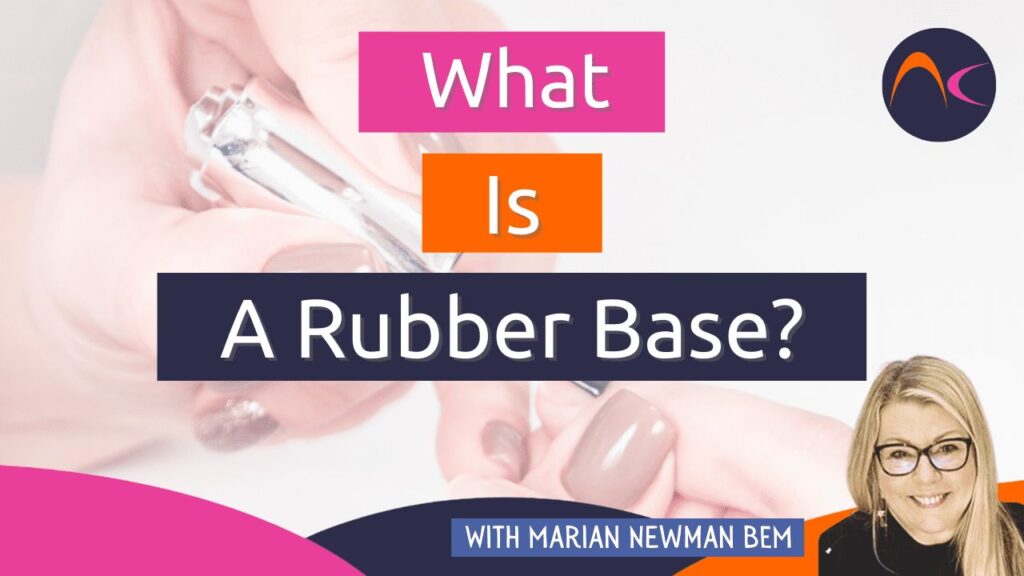I have recently written about ‘BIAB’ so nail pros have some understanding of what it actually is. Now I’m explaining a bit about the rubber base coat products that have become popular.
Você sabe para que os usa? Você sabe o que eles devem fazer? Como saber se você tem um bom?
Bem, em primeiro lugar, eles não têm nada a ver com borracha! Esse é apenas um termo de marketing/descritivo usado para, o que deveria ser, um produto específico.
A base coat of any kind is formulated to be the layer that adheres to both the nail plate AND the coating above. It is often in UV gel polish systems, and there are very few colour coats that have good adhesion properties (but there are some!)
The preparation of the nail plate is an essential step in any nail service, and should be done meticulously and very efficiently, without ANY damage to neither the nail plate nor the surrounding skin. If a system only needs minimal prep, then the base coat probably has high levels of adhesion monomers, which are far from acceptable in the health and safety of the service.
Many base coats have a very low viscosity, which is why they often have a shorter curing time. They are purely there to form a good bond between the natural substrate (the nail plate) and the ‘plastic’ coating. Those that have a higher viscosity often are formatted to do a specific job. This is where a ‘rubber base’ comes in.
Having a choice of base coats is a good plan as every client’s nails and lifestyle are different. What works for one may not work for another. This is where your professionalism and knowledge come in!
Embora não haja nenhuma conexão real com a borracha, a descrição sugere um revestimento flexível que deve funcionar bem com unhas flexíveis, finas e danificadas, para que não haja um revestimento mais rígido tentando se prender a uma placa de unha em movimento.
So that is the best ‘use’! Not for all! There is no point in putting a flexible base on a strong nail plate. They may not even work for a dry nail plate as that can be quite rigid or brittle.
Como saber se você tem um bom? (Essas informações são de Jim McConnell, da McConnell Labs)
Faça esse experimento você mesmo.
– apply a coat of a ‘rubber base’ on a form
– cure for the recommended time (or double if you don’t have a matched UV lamp)
– remove the sticky layer
– peel the coating off the form
– does it bend and not snap? (It should bend)
– does it tear easily? (it shouldn’t)
– can it be stretched? (very few will stretch, but only very slightly)
Esse pequeno experimento será um bom teste e permitirá que você compare várias marcas.
A maioria das marcas terá uma boa aderência quando a unha for preparada adequadamente e for adequada para o indivíduo! (Um tamanho não serve para todos!)
Isso o ajudará a decidir se a sua escolha realmente cumpre o que promete.
Lembre-se: por que você o está usando?
Does it fit your client’s nail condition or lifestyle?
Ele faz o que você espera que ele faça?
If you’ve ever experienced a burning sensation while using UV gels, you may be wondering if this is normal. Learn more about se os géis UV devem queimar como loucos em nosso artigo da Base de Dados de Conhecimento sobre Pregos.


